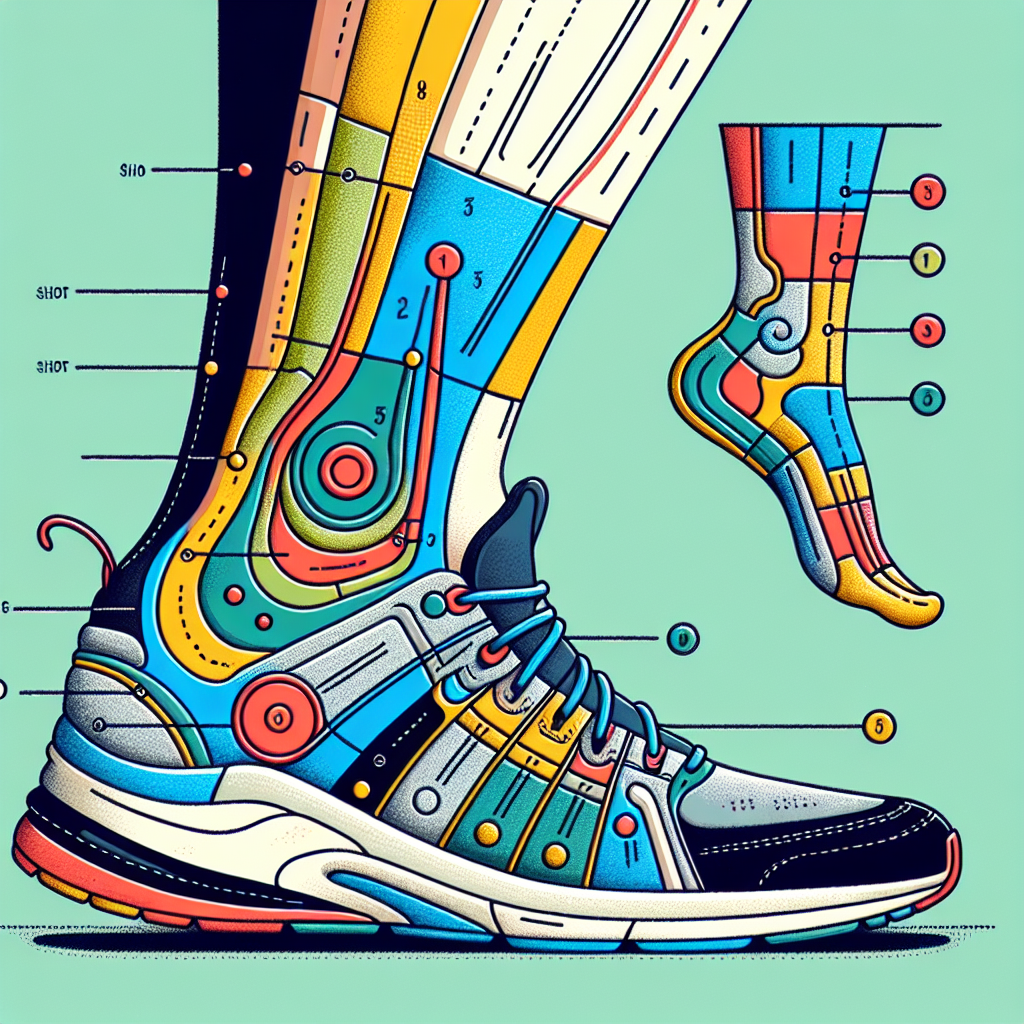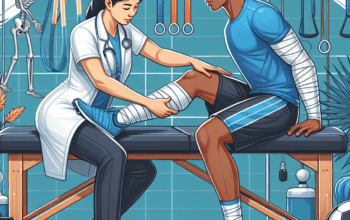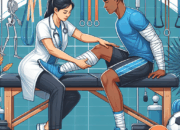Introduction
In the world of sports, the right footwear is often the unsung hero that plays a crucial role in performance, comfort, and, importantly, injury prevention. As we explore the connection between footwear and sports injury rates, it becomes evident that the shoes athletes choose can significantly influence their risk of sustaining injuries. With advancements in technology and research, particularly in 2025, we are gaining more insights into how various shoe materials, designs, and features can mitigate or exacerbate the risks associated with physical activity. This article delves into the multifaceted relationship between footwear and sports injuries, shedding light on what athletes and recreational players alike should consider in their choices.
Understanding Sports Injuries: The Role of Footwear
Sports injuries are multifactorial, influenced by physical conditioning, technique, and most importantly, the equipment used—in this case, footwear. The design of sports shoes is critical in providing adequate support and shock absorption. In running, for instance, footwear needs to effectively cushion the foot during impact, helping to minimize the risk of knee and ankle injuries. Research published in 2025 has shown that athletes who invest in sport-specific shoes—designed to meet the unique demands of their sport—experience considerably fewer injuries than those in general athletic footwear.
Moreover, improper footwear can lead to anatomical changes over time. Shoes that do not properly fit the foot or provide inadequate support can result in conditions such as plantar fasciitis and Achilles tendonitis. A 2025 study indicated that runners who switched to shoes with better arch support reported a 30% reduction in common overuse injuries within six months. This indicates a clear link between footwear choices and long-term health outcomes in athletes, underscoring the importance of selecting the right shoes for individual biomechanics.
The Latest Footwear Technologies Impacting Injury Rates
The footwear industry is constantly evolving, with 2025 showcasing several groundbreaking technologies aimed at reducing injury rates. One significant advancement is the use of 3D printing technology to create customized shoes tailored to the individual’s foot structure. This innovation allows for personalized arch support and cushioning tailored to an athlete’s unique gait, thereby reducing the risk of injury. As these technologies become more available, athletes of all levels will have improved access to footwear designed specifically for their physical needs.
Additionally, materials used in modern sports shoes have seen a significant transformation. In 2025, footwear designed with lightweight, shock-absorbing foam and engineered mesh uppers not only enhance performance but also contribute to overall foot health. Shoes equipped with advanced technologies like vibration-dampening soles and multi-density foam inserts have become popular for their ability to distribute impact forces more evenly. This innovative footwear reduces strain on joints and muscles, thus leading to a decrease in common sports injuries.
Different Sports, Different Risks: Specialized Footwear
Each sport presents its own unique set of challenges and risks, necessitating specialized footwear to best accommodate those needs. For example, basketball shoes are typically designed to provide high ankle support and traction to prevent ankle sprains during lateral movements. Conversely, soccer cleats are designed with specific stud configurations that enhance traction on grass or turf surfaces, allowing for quick pivots and acceleration without compromising foot stability.
In 2025, studies have indicated that athletes who wear sport-specific shoes are significantly less likely to develop chronic conditions associated with their sport, such as tendonitis in runners or stress fractures in basketball players. This specificity not only enhances performance but is essential for injury prevention. Athletes are encouraged to work closely with fitness professionals or podiatrists to ensure their footwear meets the demands of their specific sport, ultimately reducing injury rates associated with improper equipment.
The Impact of Footwear Choices on Youth Athletes
Youth sports participation has risen dramatically in recent years, and with this increase comes a heightened risk of sports injuries. Inadequate footwear can lead to severe consequences for young athletes still developing physically. A comprehensive analysis published in 2025 highlights that children wearing proper sport-specific footwear experienced fewer injuries during play compared to those in ill-fitting or general-use shoes.
Educating coaches, parents, and young athletes about the importance of appropriate footwear is critical in today’s sports culture. Proper footwear not only enhances performance but is an essential aspect of injury prevention strategies. Ensuring that youth athletes have access to high-quality shoes tailored for their sports can make a significant difference in long-term health outcomes, allowing them to continue enjoying physical activity throughout their lives.
Future Directions in Footwear Design for Injury Prevention
As we look to the future of sports and footwear technology, ongoing research will undoubtedly highlight new ways to enhance safety and performance. Innovations such as smart shoes equipped with sensors to monitor foot pressure and gait mechanics are being explored. These advancements could provide real-time feedback to athletes and coaches about their movements, allowing for immediate adjustments that could prevent injuries before they occur.
Moreover, the push for sustainability in sports gear might lead to the development of eco-friendly materials that do not compromise performance or safety. As consumer awareness grows, athletes prioritize purchasing footwear that reflects their values, which could drive companies to focus more on not just performance, but also the health aspects of the footwear. With these advancements in mind, the future of sports footwear looks promising in terms of injury prevention and performance enhancement.
Conclusion
The connection between footwear and sports injury rates is complex yet critical. The right shoes can make a substantial difference in performance and safety, reducing the likelihood of injuries across various sports. From recent technological advancements to an increased understanding of biomechanics, the choices athletes make regarding their footwear can lead to significant improvements in their overall physical health. As we continue to explore the dynamic relationship between footwear and sports injuries in 2025 and beyond, it is imperative that both athletes and coaches prioritize this essential aspect of sports equipment to foster a safer athletic environment.
FAQs
1. How important is footwear in preventing sports injuries?
Footwear is crucial in preventing sports injuries. Proper shoes can provide the necessary support and cushioning, significantly lowering the risk of injuries like sprains, strains, and chronic overuse conditions.
2. Are custom-made shoes worth the investment?
Yes, custom-made shoes can be highly beneficial for individuals with unique foot structures or specific sports needs. Personalized footwear has been shown to reduce injury rates and improve performance by providing the optimal support.
3. What types of shoes should young athletes wear?
Young athletes should wear sport-specific shoes designed for their activity to ensure proper support, traction, and cushioning to prevent injuries. Consulting with specialists can help in making the right choice.
4. How can advancements in footwear technology help in injury prevention?
Advancements such as 3D printing and smart technologies allow for more tailored designs that better fit an individual’s foot, distribute pressure evenly, and monitor movement patterns, significantly aiding in injury prevention.
5. Should I replace my athletic shoes regularly?
Yes, replacing athletic shoes regularly is essential. Even the best shoes lose their cushioning and support over time, which can increase the risk of injuries. It’s generally recommended to replace them every 300-500 miles or as soon as you notice degradation in performance.












